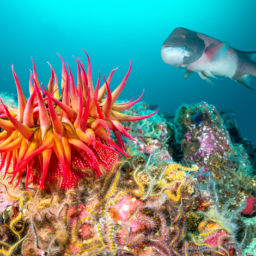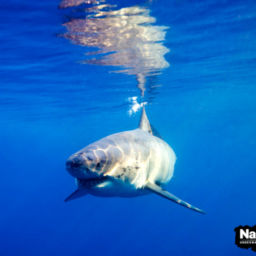Despite having a stable conservation status in the North Pacific Ocean, from the Subarctic to more temperate waters, divers and snorkelers rarely see the elusive salmon shark. Alaska’s frigid waters are one of the only places in the world to see the sharks on snorkel, with expeditions each summer. The sharks roam between the surface and a depth of 700 feet (225 m).
What is the salmon shark?
The salmon shark (Lamna ditropis) is in the mackerel shark family, which means that they have large teeth, crescent-shaped tails and conical heads. Salmon sharks are sometimes misidentified as other species, such as the great white, mako or porbeagle. Like the other mackerel sharks, the salmon shark has dark gray/blackish coloring on top, and light or white markings on its belly. Its thick, muscular double-keel tail is uncommon among sharks, although it is quite like the porbeagle’s, so the two species are often misidentified. The salmon shark has a large, dark eye, long gill slits, and large, sharp teeth that it uses to prey on a variety of animals such as squid, sea otters, birds, and — of course — salmon.
Salmon shark behavior
Scientists think salmon sharks can reach a maximum age of 25 years and a length of 10 feet (3 m). They weigh around 1,100 pounds (500 kg). Salmon sharks migrate to follow prey and segregate depending on age and sex. For example, the male salmon shark travels further north to hunt, where its unusually high body temperature allows it to hunt in colder conditions. Although scientists have discovered that females have a litter of two to five pups every spring, salmon sharks remain one of the least well-studied of all shark species. Although they occasionally end up as bycatch in pelagic waters, fortunately the IUCN categorizes them as of ‘least concern’ on the IUCN Red List.






